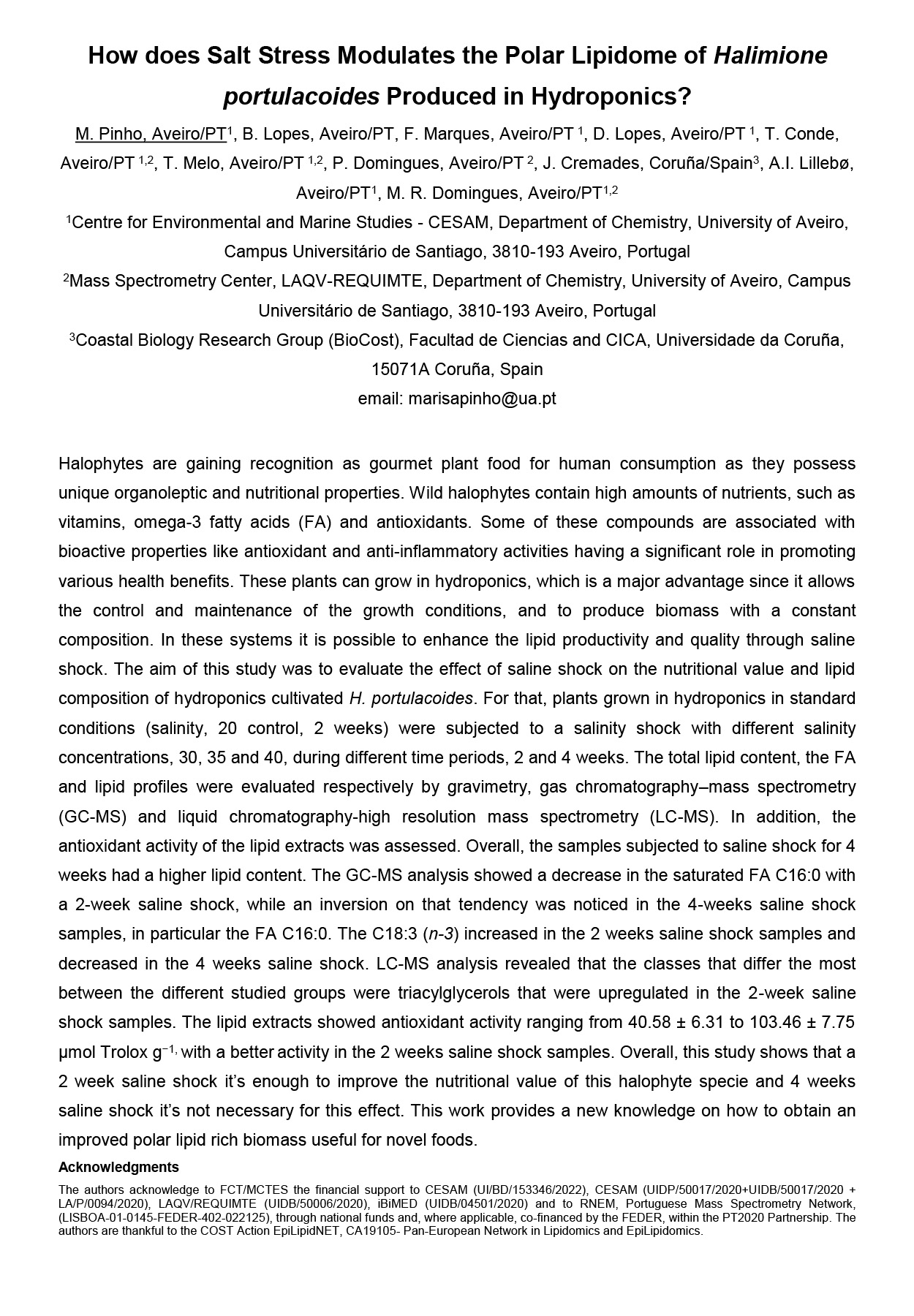Halophytes are gaining recognition as gourmet plant food for human consumption as they possess unique organoleptic and nutritional properties. Wild halophytes contain high amounts of nutrients, such as vitamins, omega-3 fatty acids (FA) and antioxidants. Some of these compounds are associated with bioactive properties like antioxidant and anti-inflammatory activities having a significant role in promoting various health benefits. These plants can grow in hydroponics, which is a major advantage since it allows the control and maintenance of the growth conditions, and to produce biomass with a constant composition. In these systems it is possible to enhance the lipid productivity and quality through saline shock. The aim of this study was to evaluate the effect of saline shock on the nutritional value and lipid composition of hydroponics cultivated H. portulacoides. For that, plants grown in hydroponics in standard conditions (salinity, 20 control, 2 weeks) were subjected to a salinity shock with different salinity concentrations, 30, 35 and 40, during different time periods, 2 and 4 weeks. The total lipid content, the FA and lipid profiles were evaluated respectively by gravimetry, gas chromatography–mass spectrometry (GC-MS) and liquid chromatography-high resolution mass spectrometry (LC-MS). In addition, the antioxidant activity of the lipid extracts was assessed. Overall, the samples subjected to saline shock for 4 weeks had a higher lipid content. The GC-MS analysis showed a decrease in the saturated FA C16:0 with a 2-week saline shock, while an inversion on that tendency was noticed in the 4-weeks saline shock samples, in particular the FA C16:0. The C18:3 (n-3) increased in the 2 weeks saline shock samples and decreased in the 4 weeks saline shock. LC-MS analysis revealed that the classes that differ the most between the different studied groups were triacylglycerols that were upregulated in the 2-week saline shock samples. The lipid extracts showed antioxidant activity ranging from 40.58 ± 6.31 to 103.46 ± 7.75 μmol Trolox g−1, with a better activity in the 2 weeks saline shock samples. Overall, this study shows that a 2 week saline shock it’s enough to improve the nutritional value of this halophyte specie and 4 weeks saline shock it’s not necessary for this effect. This work provides a new knowledge on how to obtain an improved polar lipid rich biomass useful for novel foods.
Acknowledgments
The authors acknowledge to FCT/MCTES the financial support to CESAM (UI/BD/153346/2022), CESAM (UIDP/50017/2020+UIDB/50017/2020 + LA/P/0094/2020), LAQV/REQUIMTE (UIDB/50006/2020), iBiMED (UIDB/04501/2020) and to RNEM, Portuguese Mass Spectrometry Network, (LISBOA-01-0145-FEDER-402-022125), through national funds and, where applicable, co-financed by the FEDER, within the PT2020 Partnership. The authors are thankful to the COST Action EpiLipidNET, CA19105- Pan-European Network in Lipidomics and EpiLipidomics.
